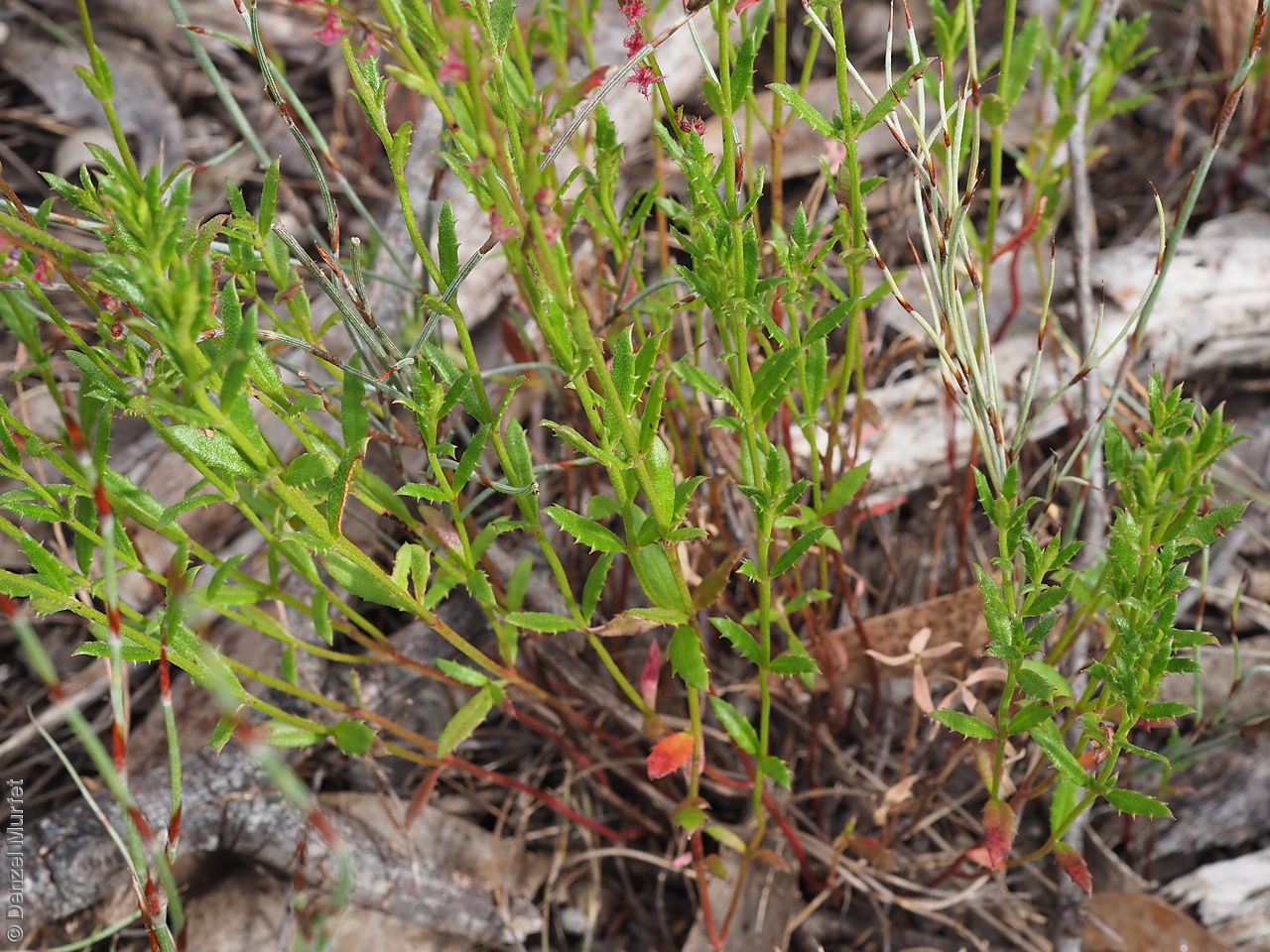
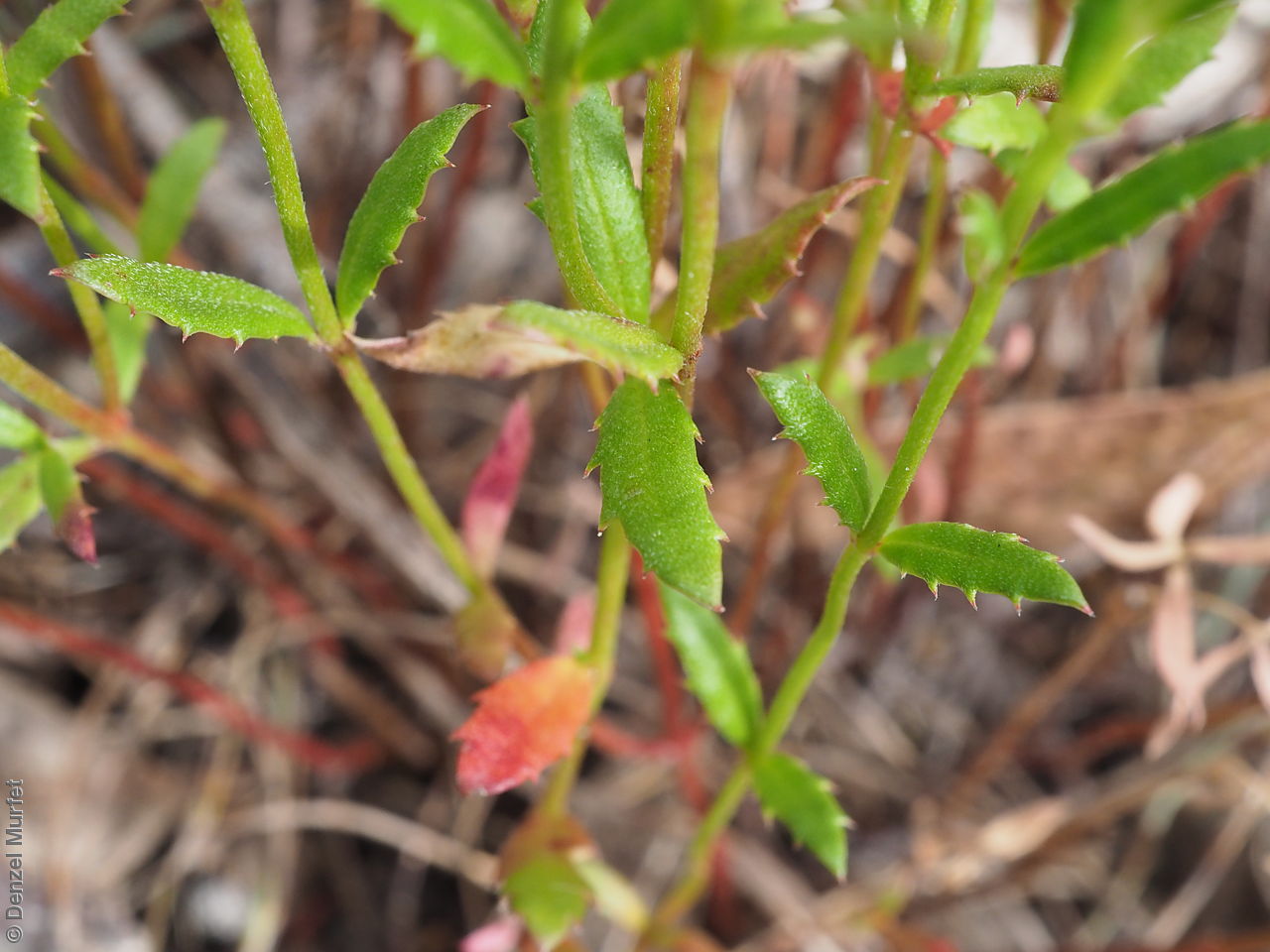
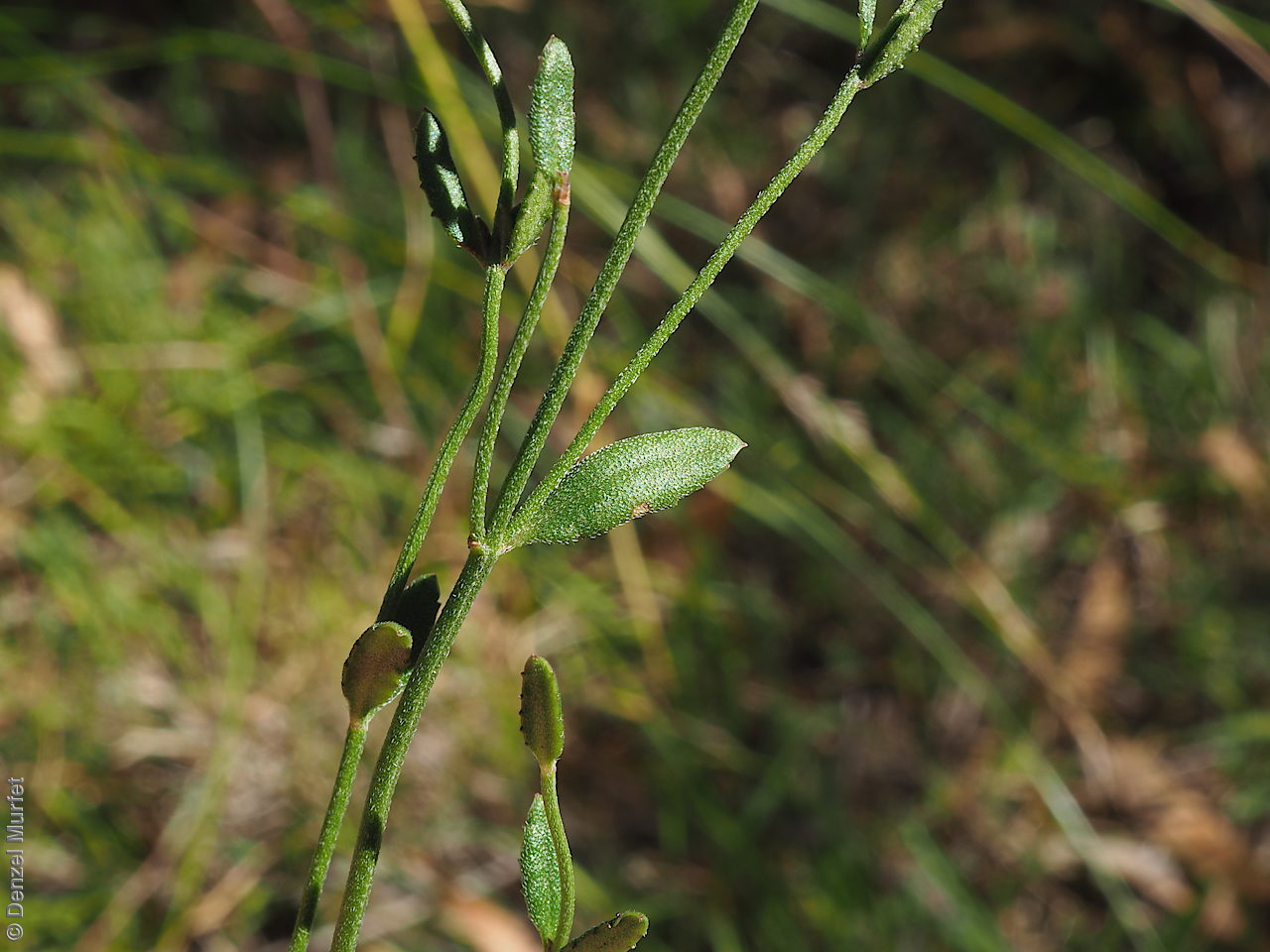
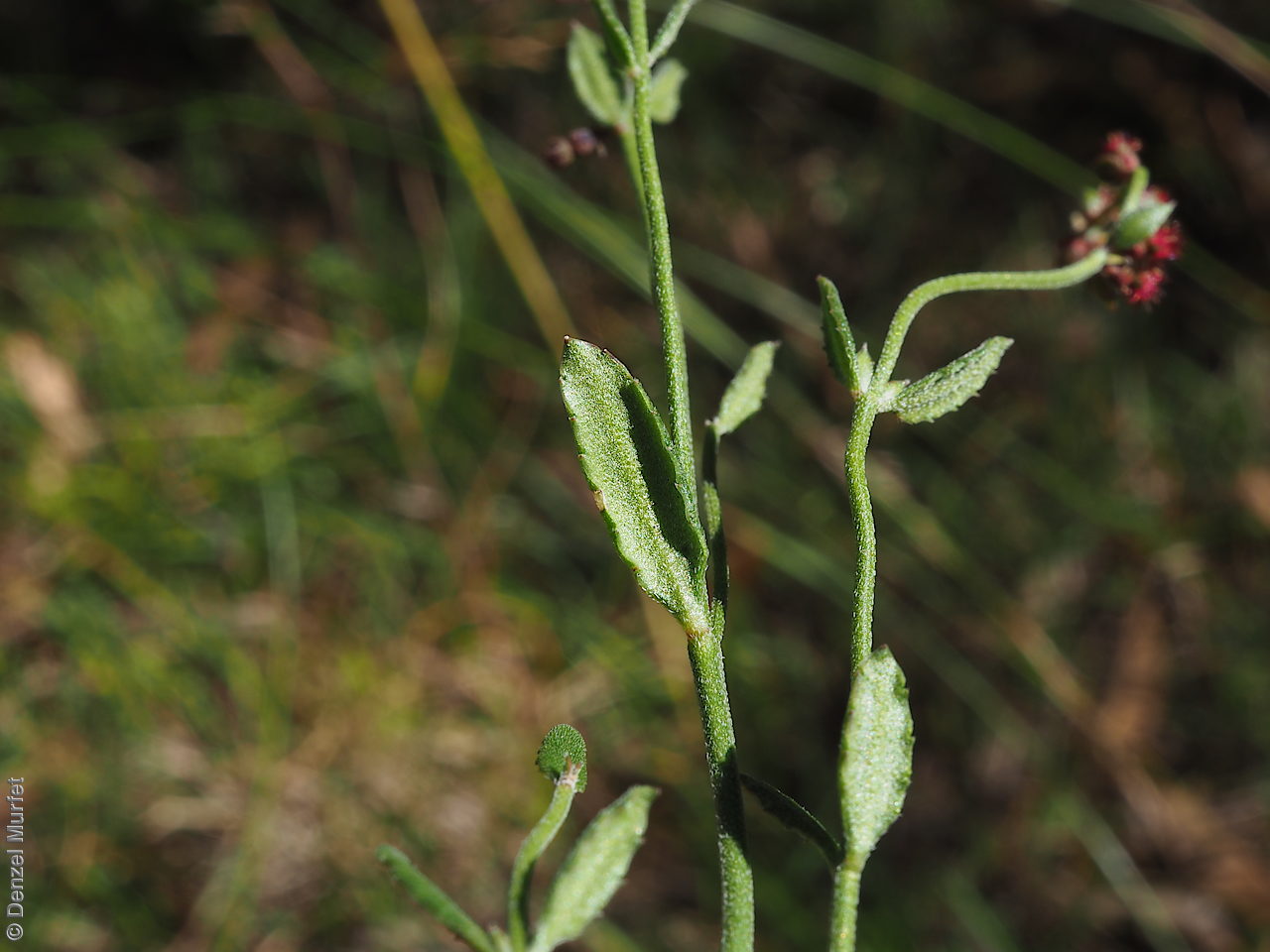
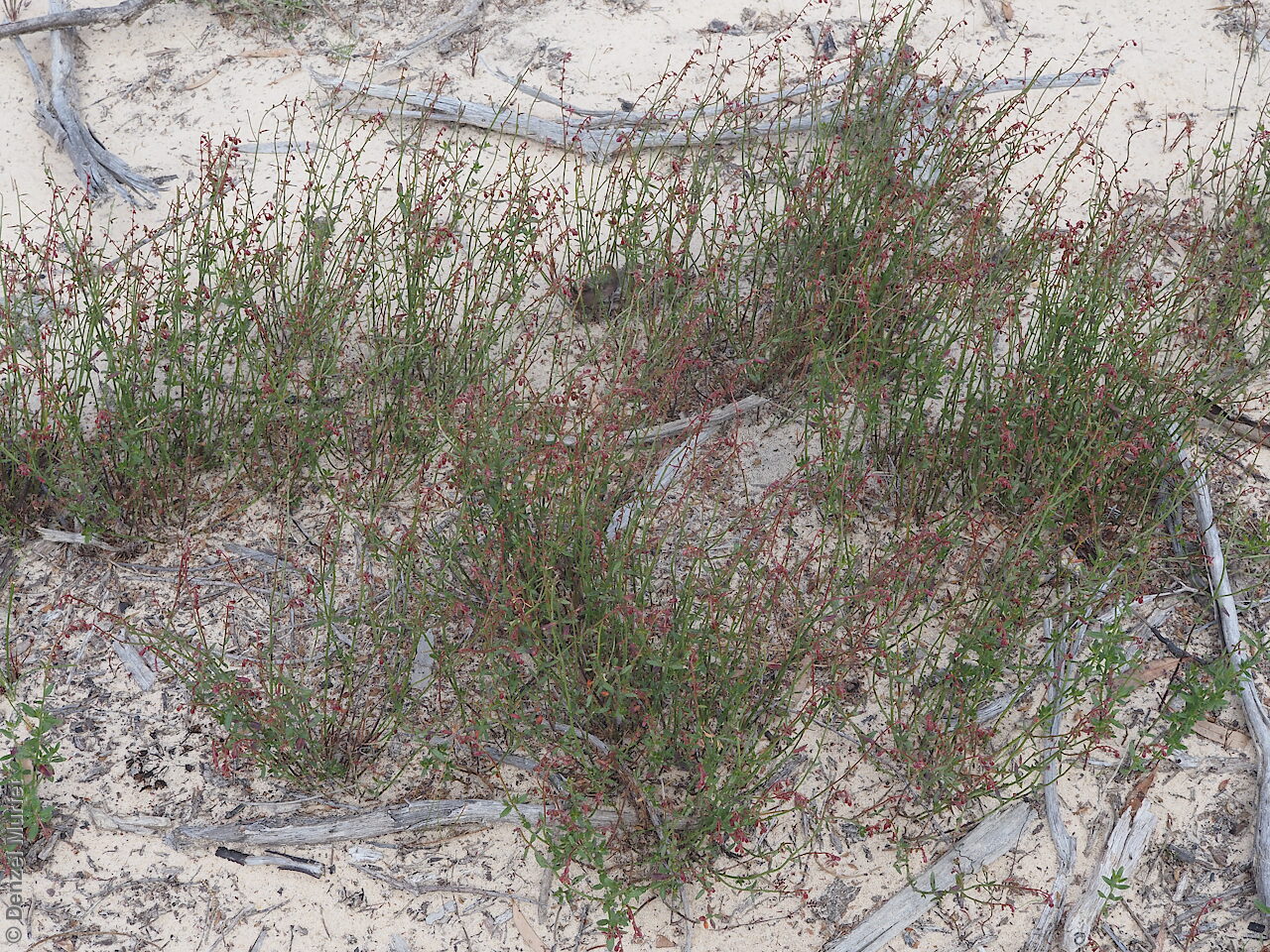
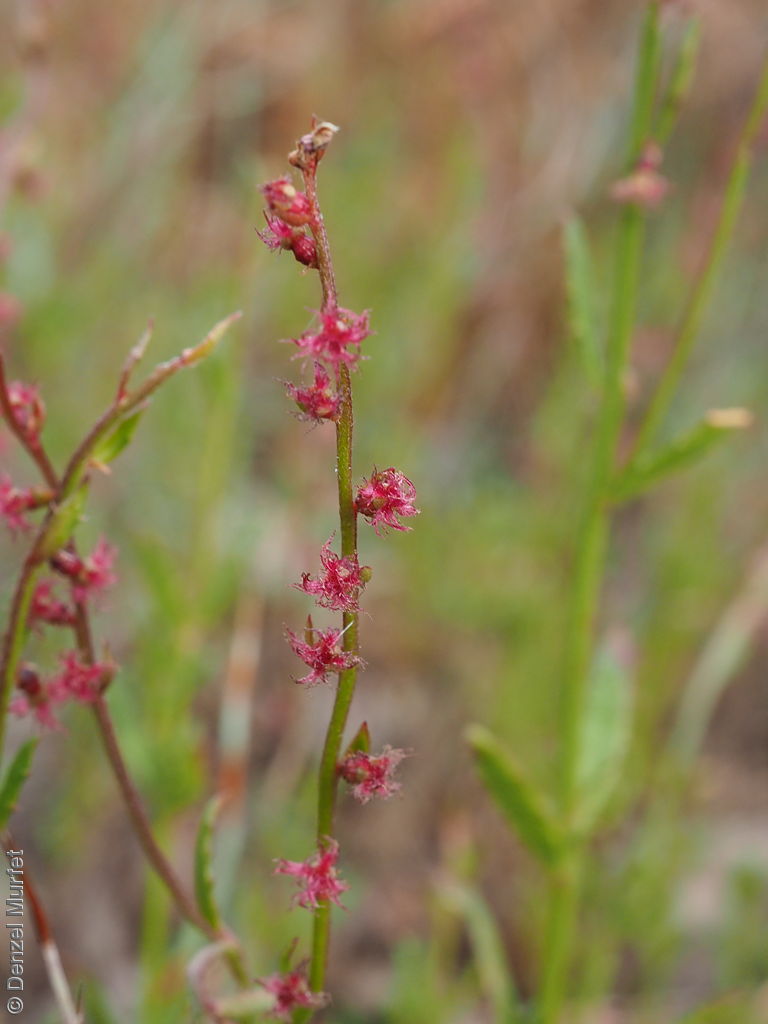
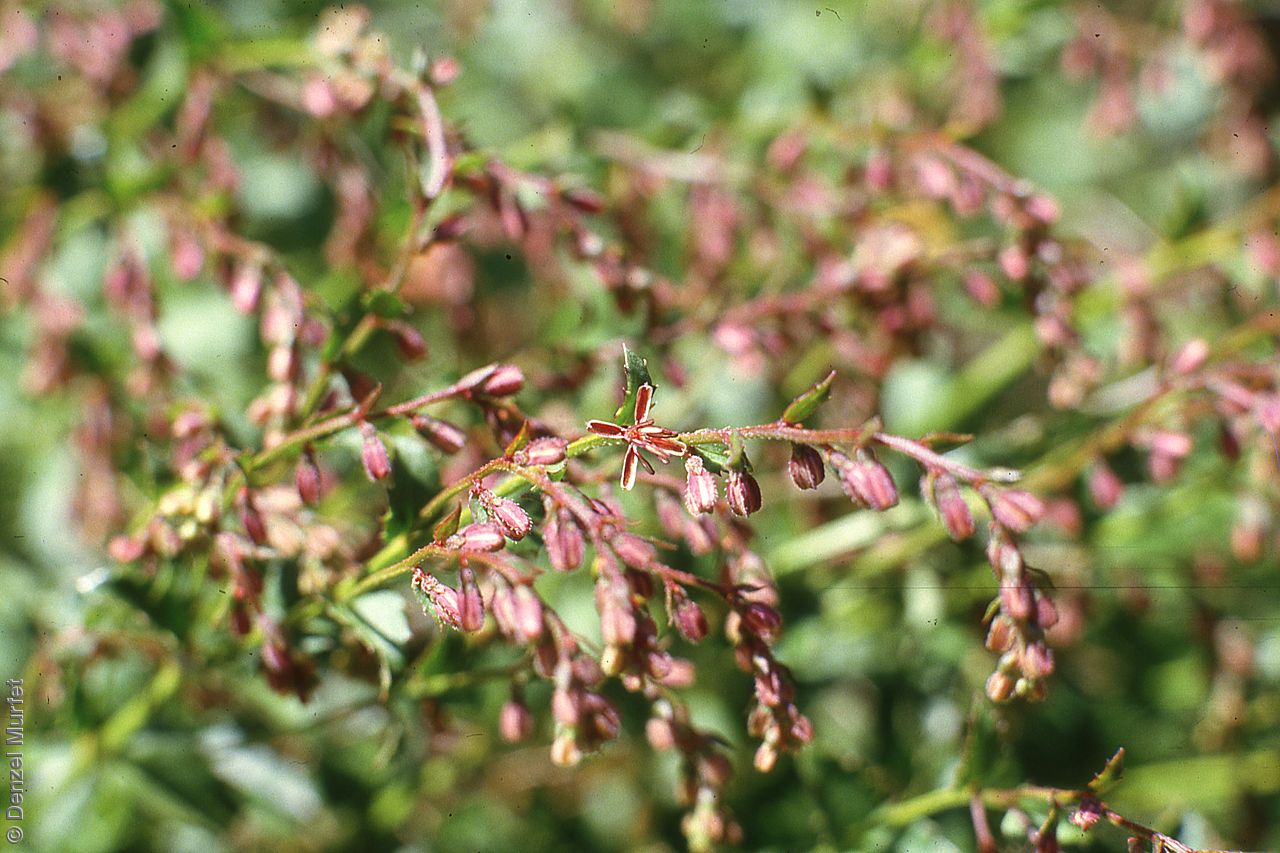
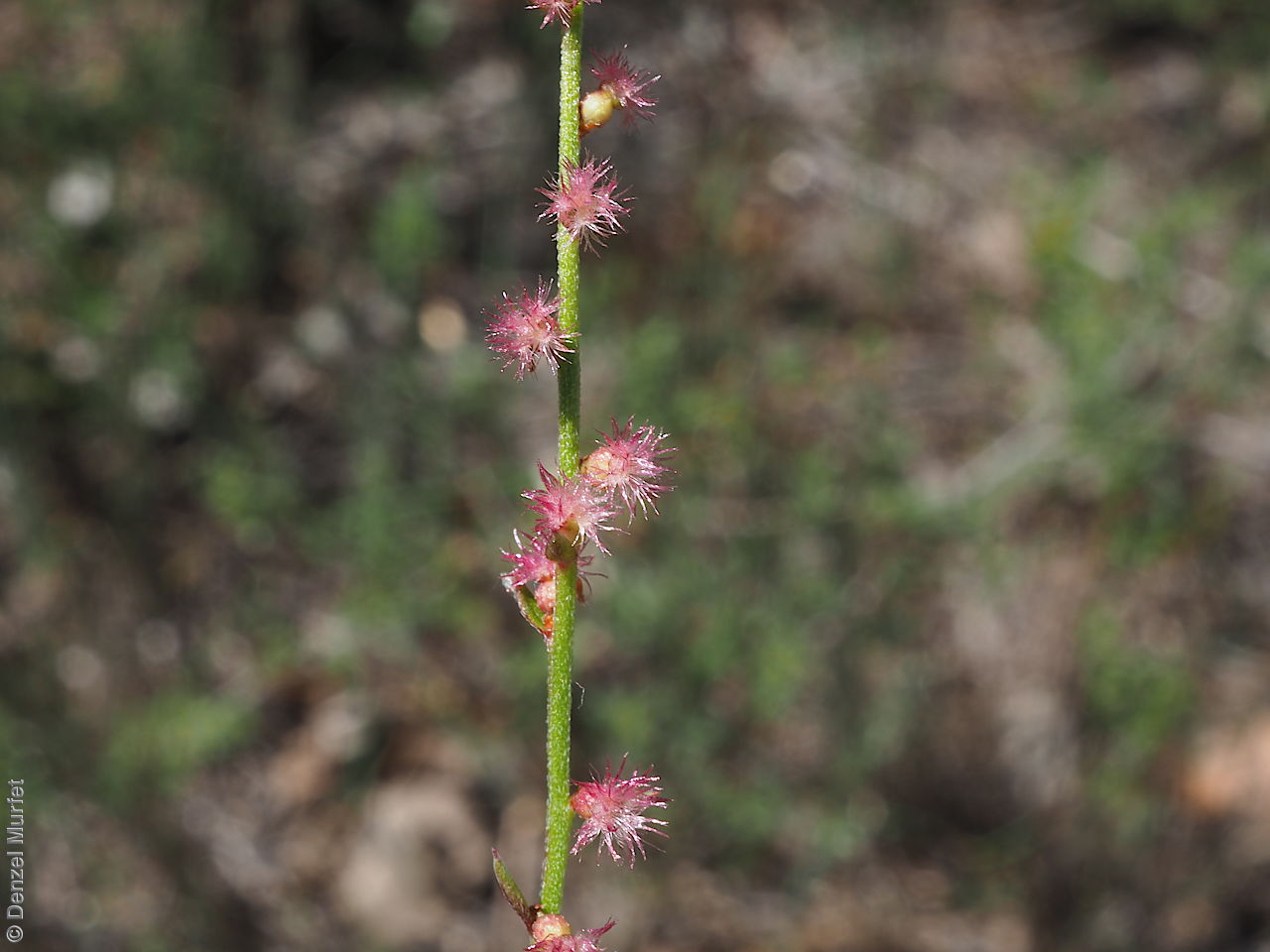
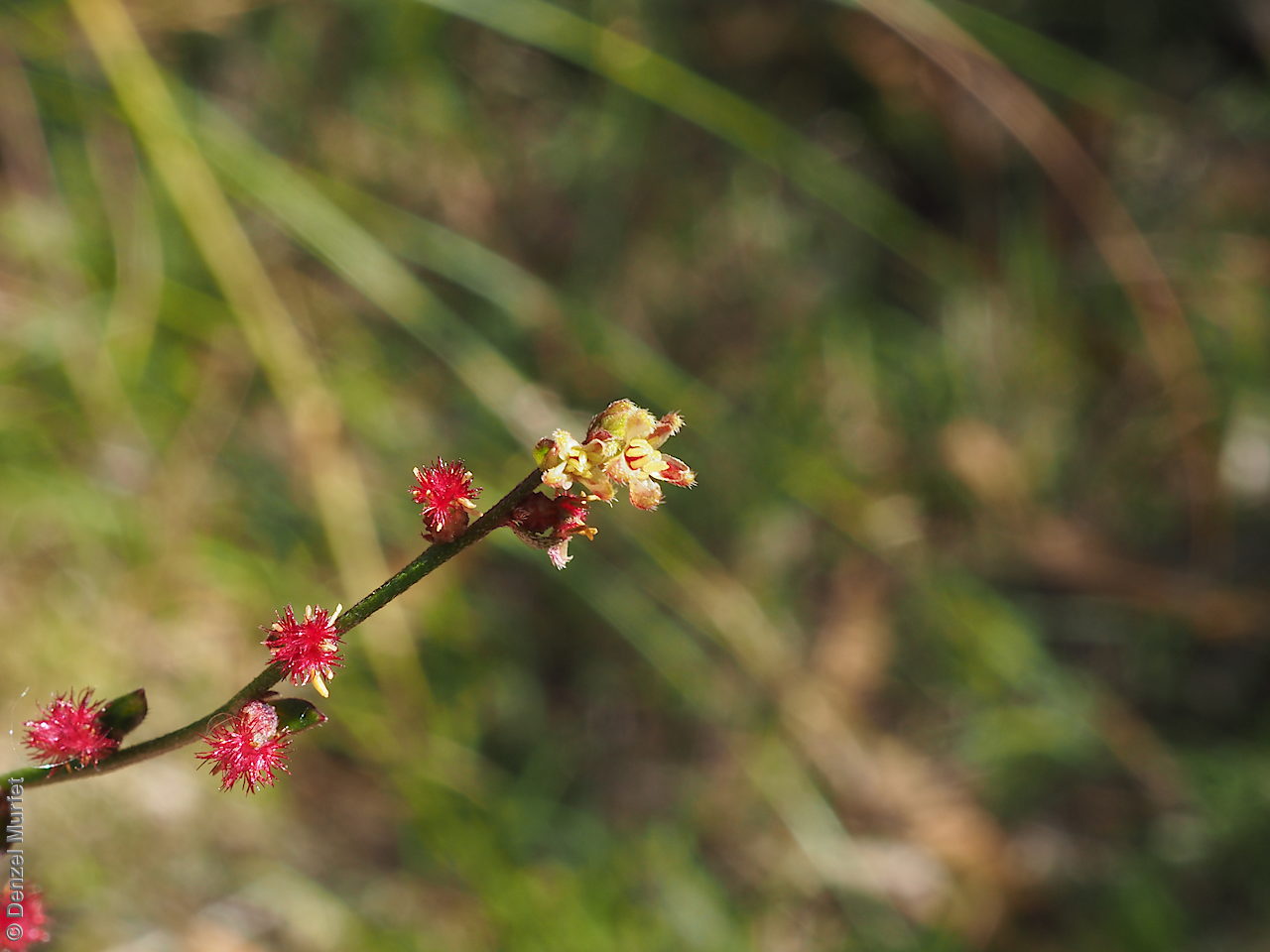
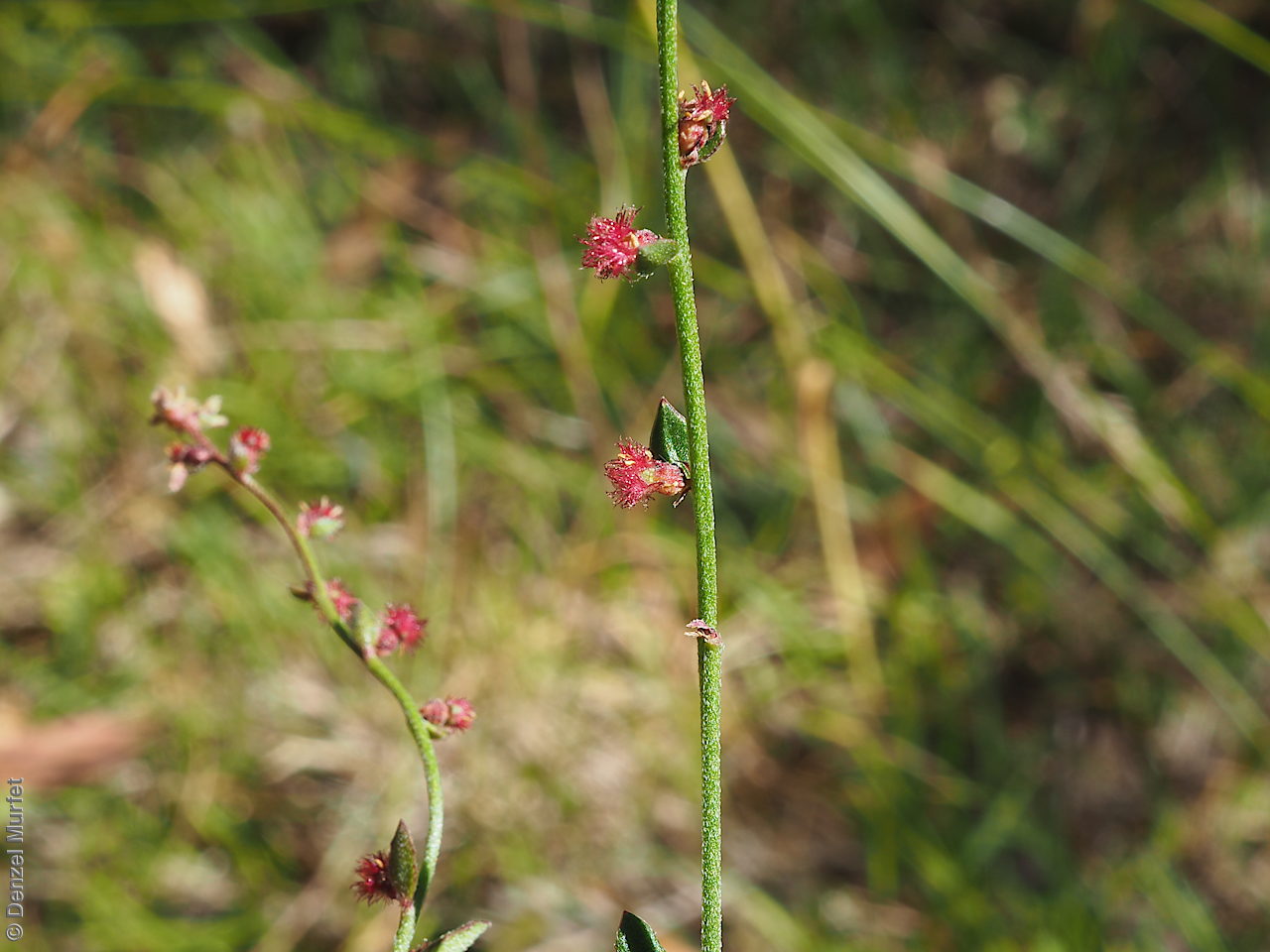
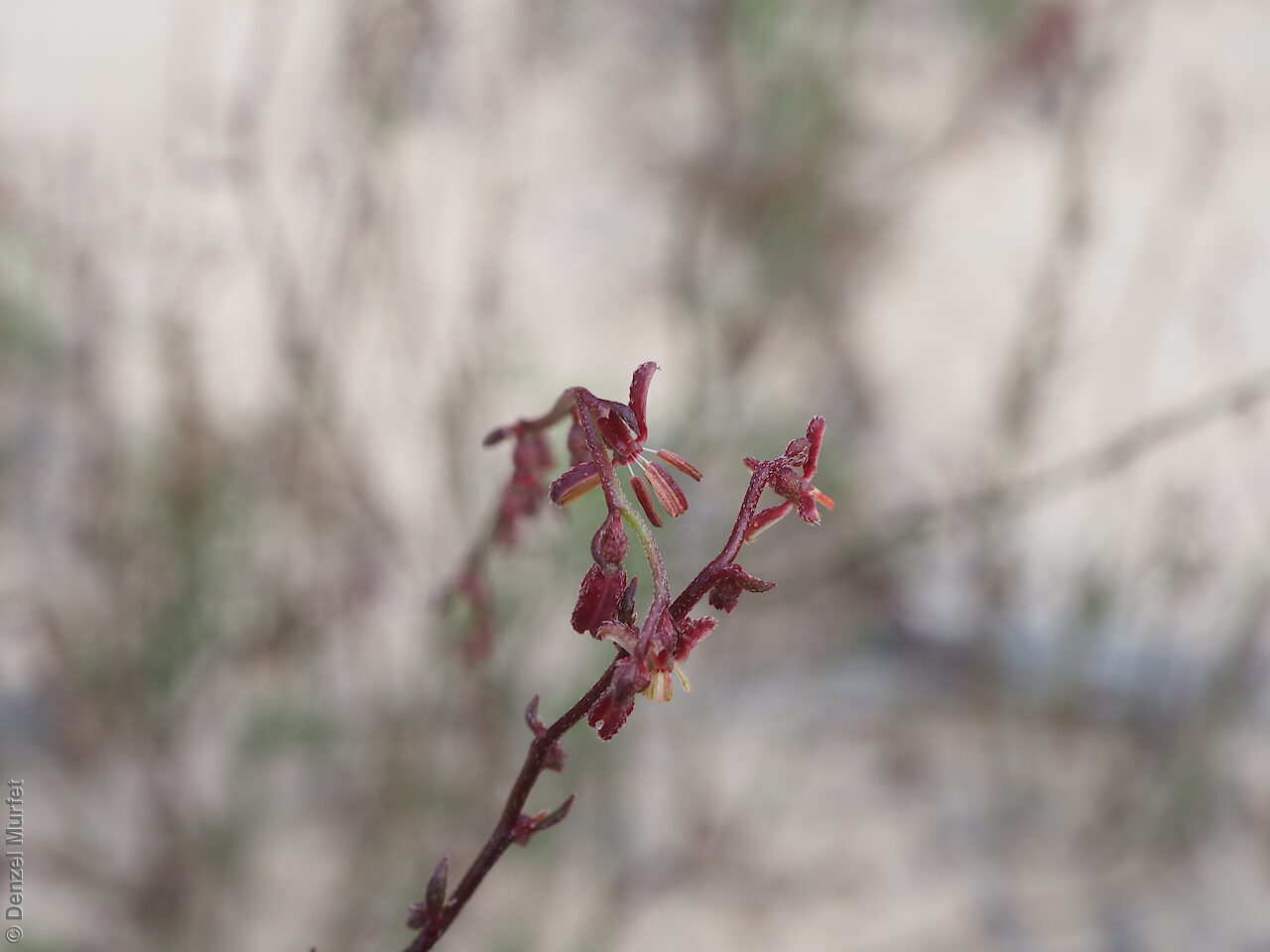
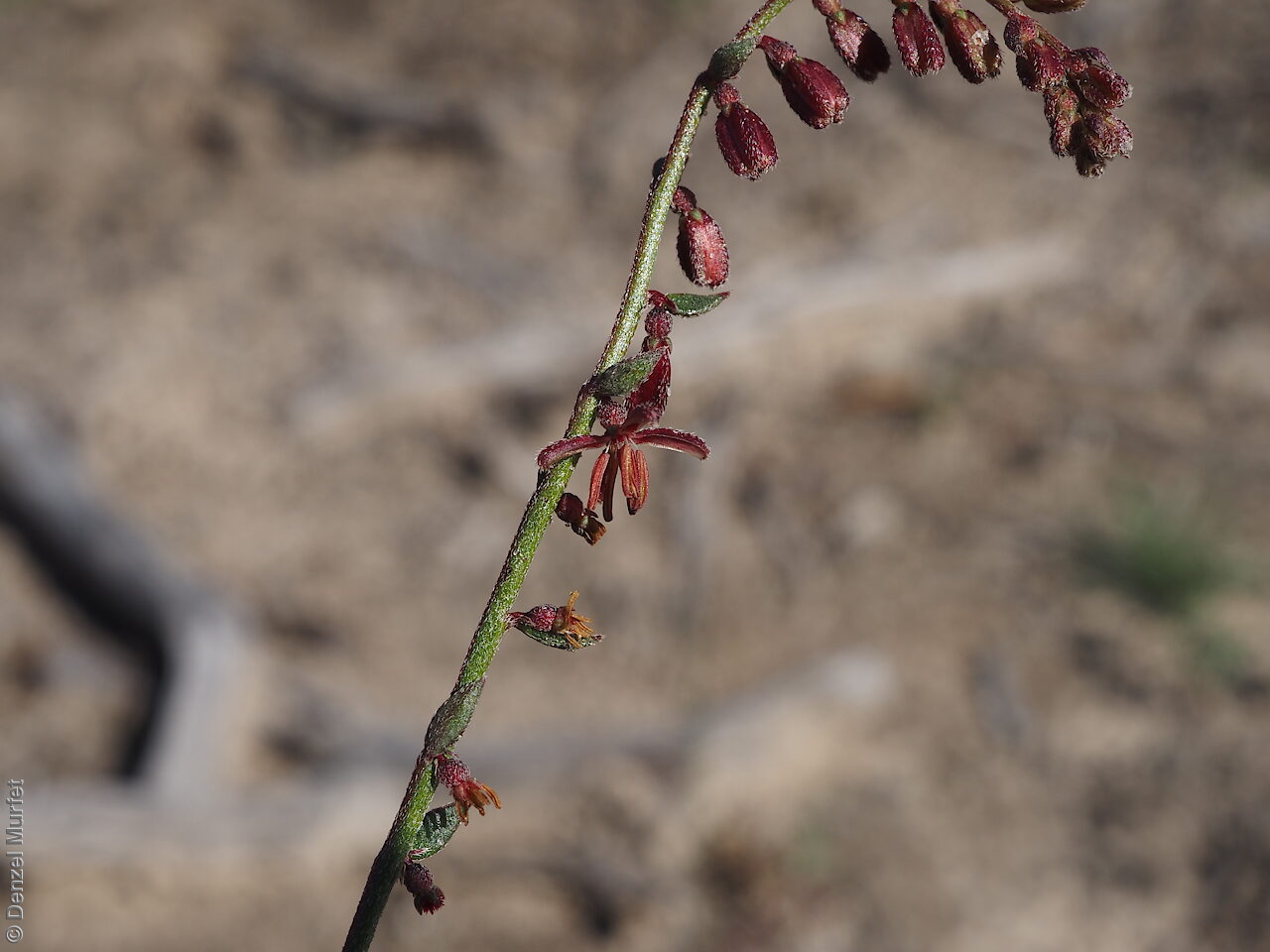
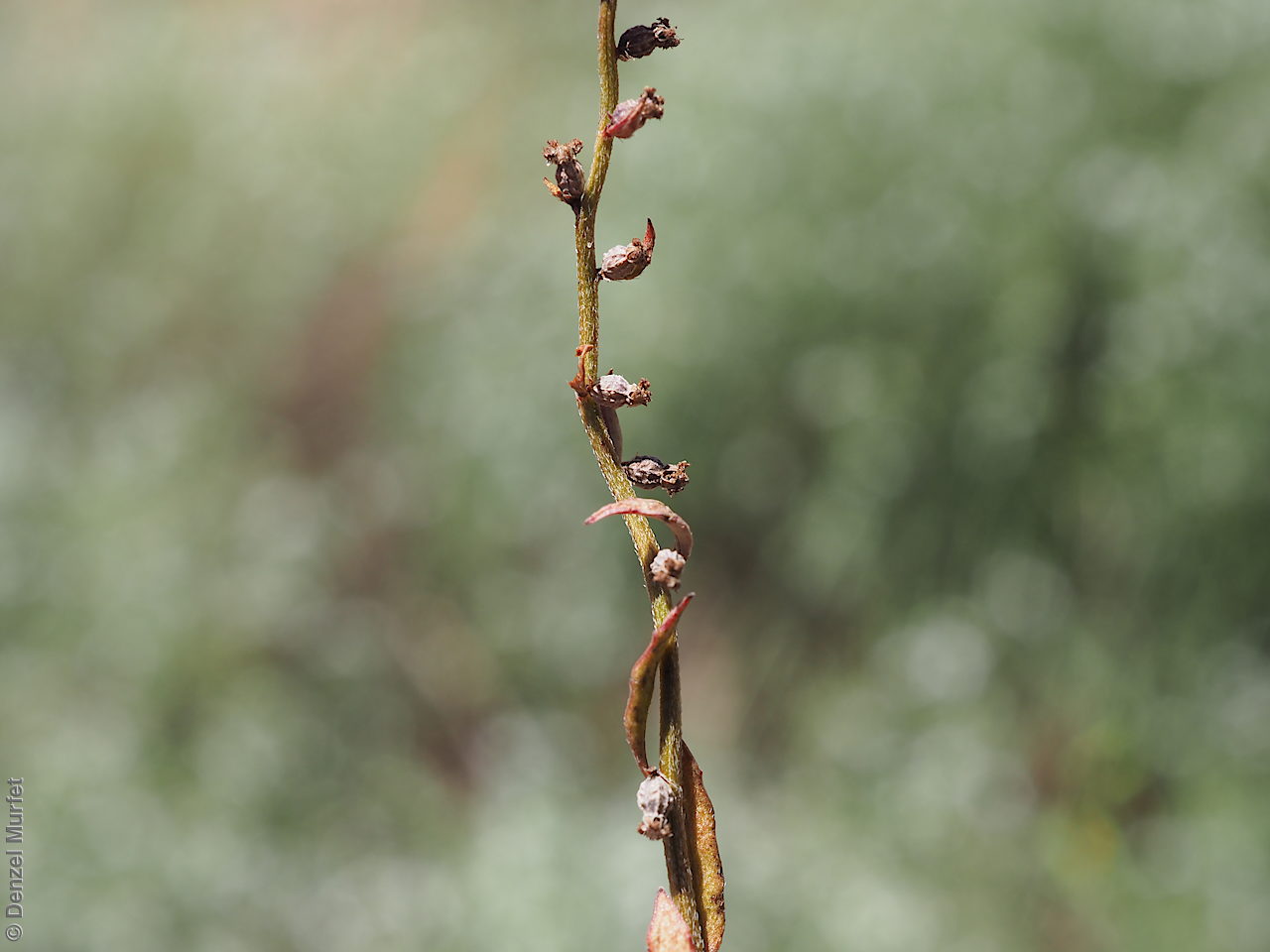
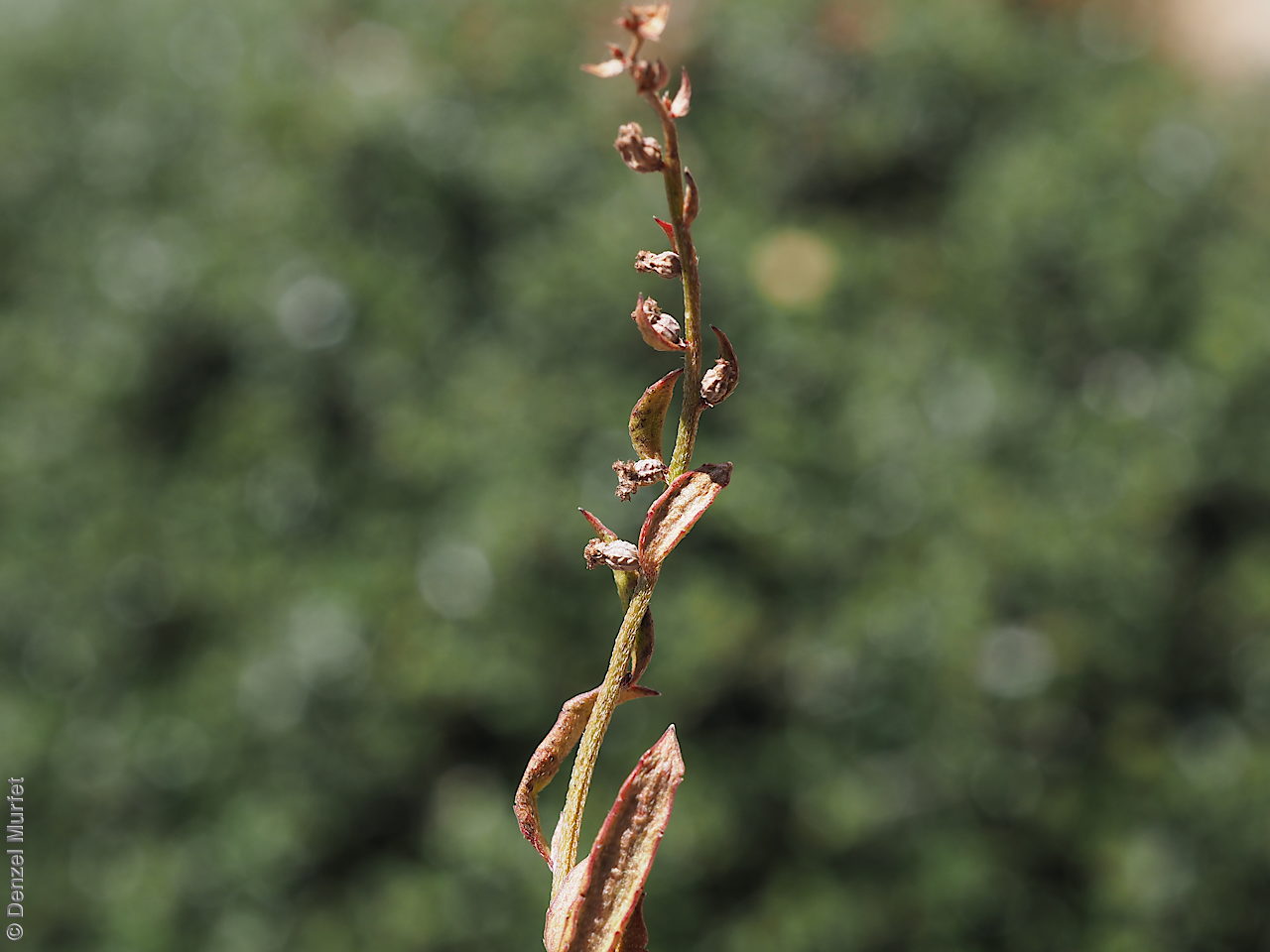
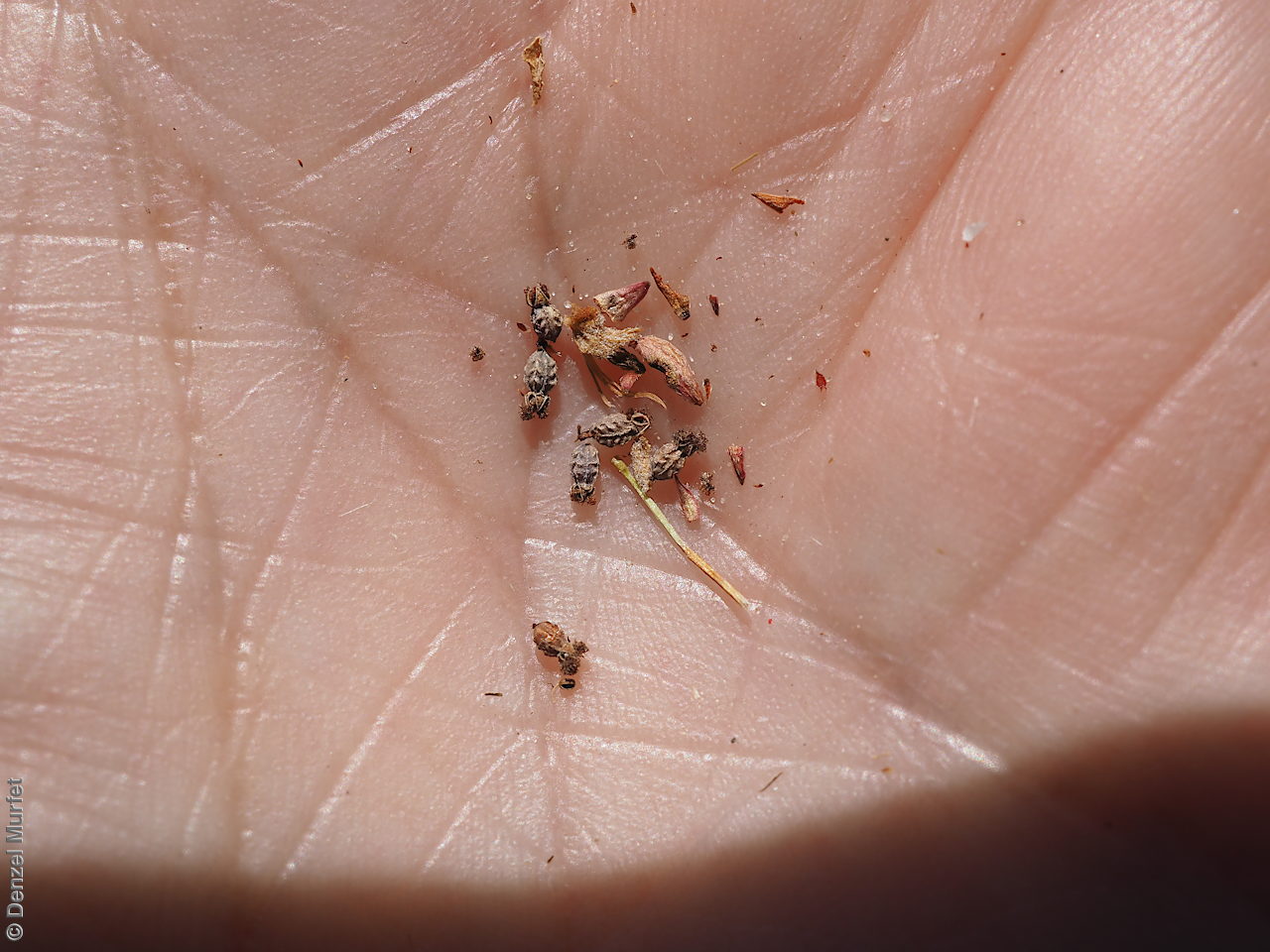
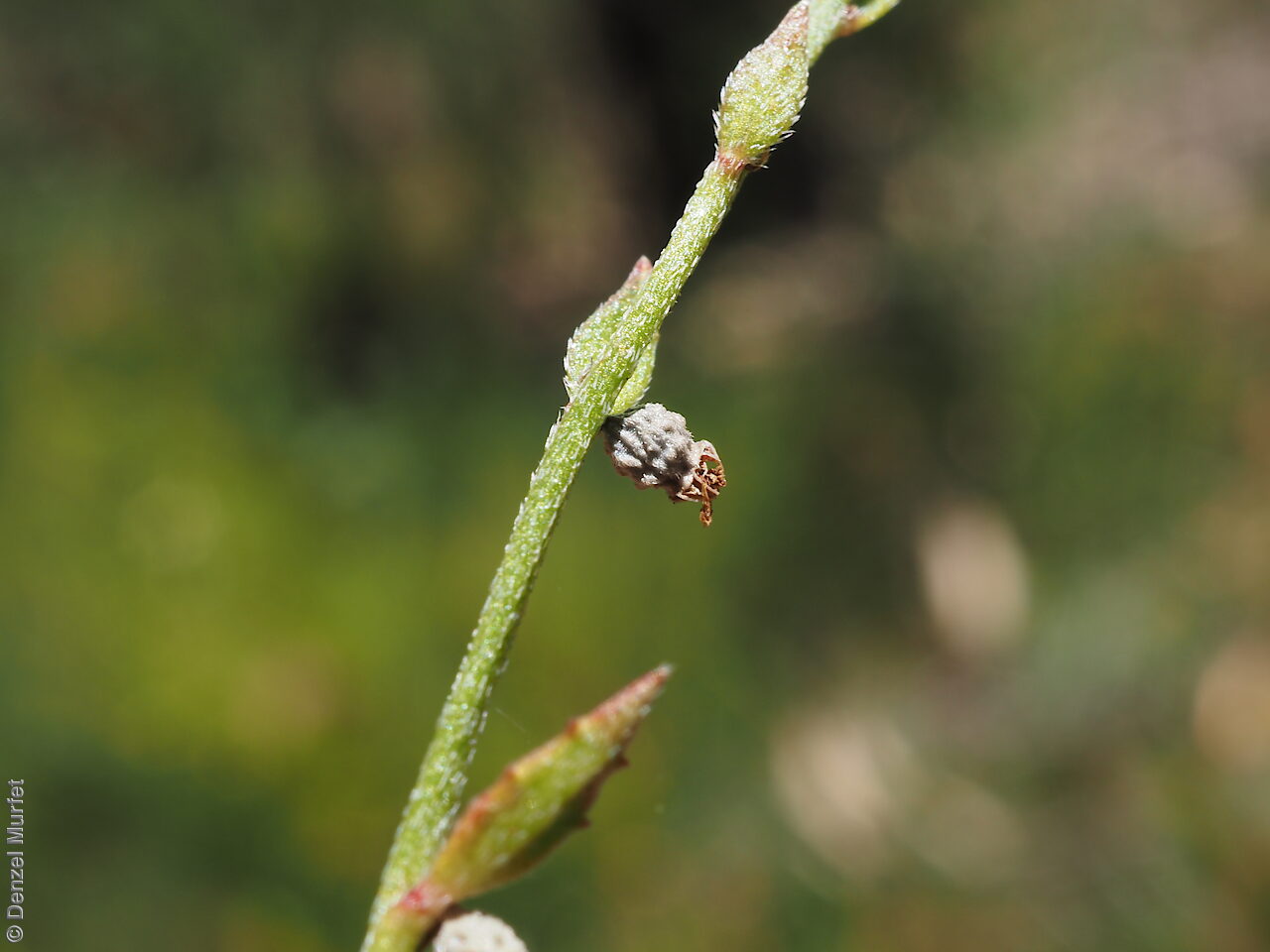
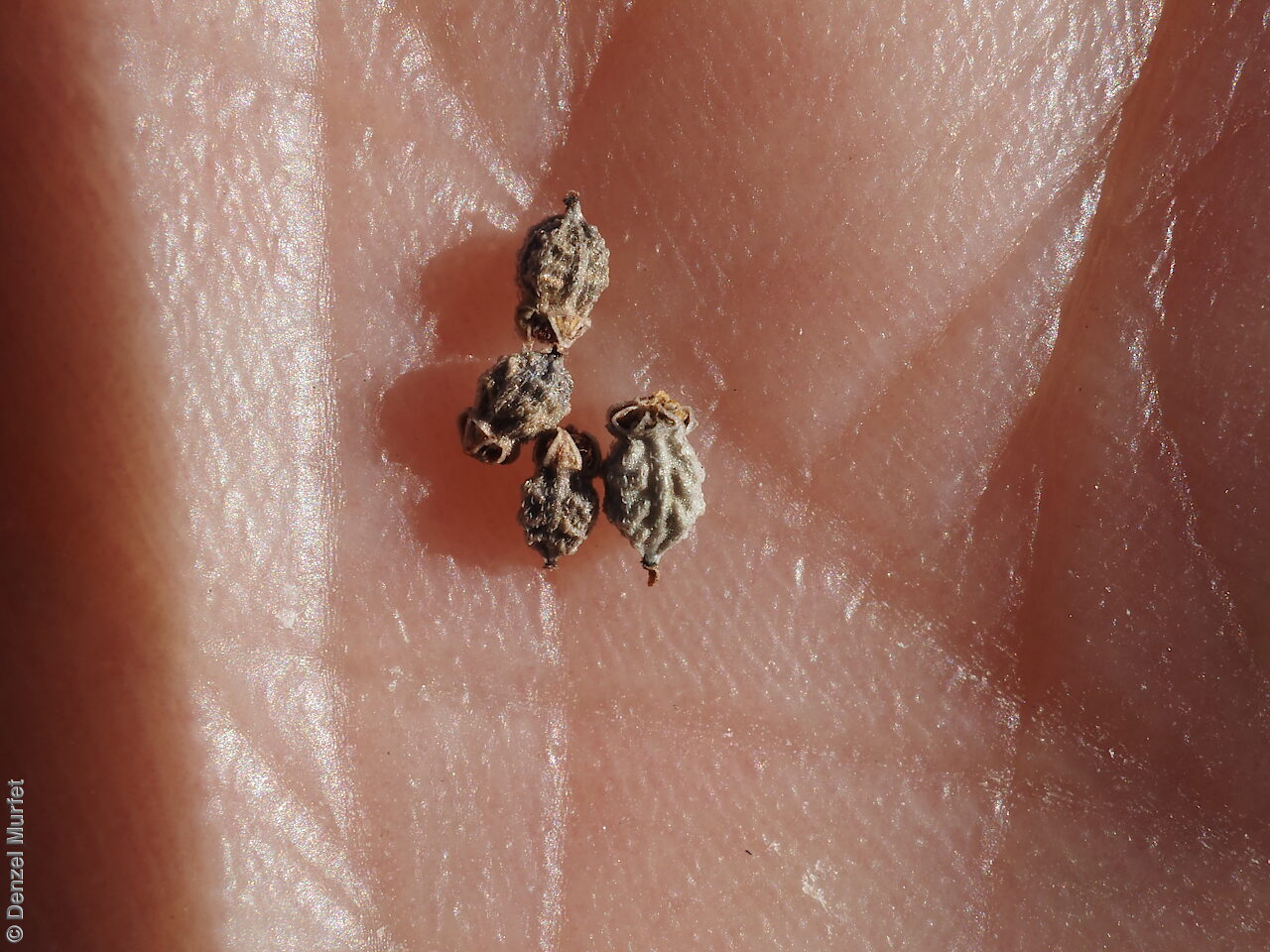

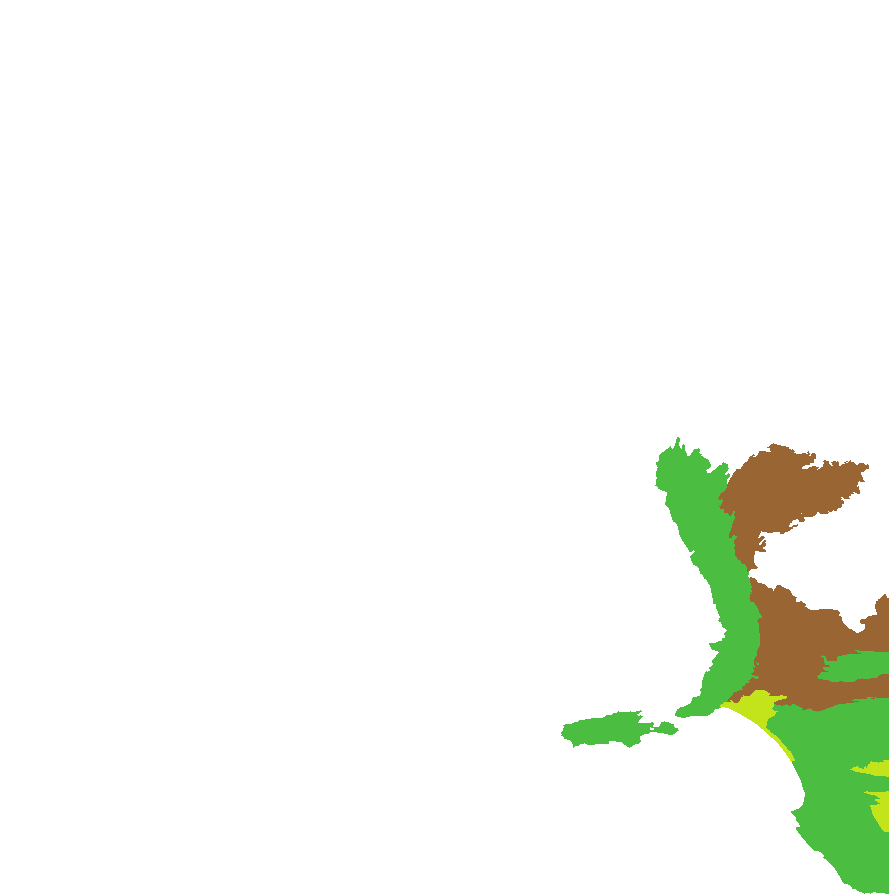
Botanical art
Prior names
Haloragis tetragyna
Common names
Common Raspwort
Small-leaf Raspwort
Etymology
Gonocarpus from the Greek 'gonia' meaning angle, corner and 'carpos' meaning fruit, referring to its ribbed fruits. Greek 'tetra' meaning four and 'gynes' meaning a woman, referring to its ovary with 4 chambers (locules).
Distribution and status
Found in south-eastern South Australia, from the Flinders Ranges to the lower South-east growing in the understorey of dry sclerophyll forest, scrubland and heathland. Also found in Queensland, New South Wales, Victoria and Tasmania. Native. Common in South Australia. Common in the other States.
Herbarium regions: Flinders Ranges, Northern Lofty, Murray, Southern Lofty, Kangaroo Island, South Eastern, Green Adelaide
NRM regions: Adelaide and Mount Lofty Ranges, Kangaroo Island, Northern and Yorke, South Australian Murray-Darling Basin, South East
AVH map: SA distribution map (external link)
Plant description
Erect or ascending perennial herb to 30 cm tall with smooth or weakly 4-ribbed, scabrous stems. Leaves opposite, lanceolate, 12 mm long x 7 mm; margins thickened, serrate with 4-8 short teeth; strigose. Inflorescence a leafy-spike at he tip stems, with numerous green to red flowers with 8 stamens; ovary with 4-locules. Flowering between October and January. Fruits are small silver-grey ellipsoid fruit to 1.5 mm long and 1 mm wide, with 8-ribbed and 2-3 calluses between the ribs; glabrous or scabrous surface. Seeds are considered the same as the fruit.
Seed collection and propagation
Collect seeds between November and March. Collect maturing fruits, those that are fat and turning grey, by running your hands along the fruit-spikes. Place the fruit in a tray and leave to dry for 1 to 2 weeks. No further cleaning is required if only fruits were collected. If collected with other material, use a sieve to separate the unwanted material. Store the seeds with a desiccant such as dried silica beads or dry rice, in an air tight container in a cool and dry place.